Charts of the Week
Current economic trends from 24 to 28 August 2020: electricity consumption, traffic of electronically tolled vehicles, economic sentiment, trade and market services
In August, economic sentiment improved for the fourth consecutive month. Freight traffic on motorways and electricity consumption in the economy indicate that after several weeks of decrease, the year-on-year decline in economic activity increased slightly again in the third week of August. With the lifting of containment measures, turnover in trade and market services (excluding trade) strengthened in June for the second consecutive month, after a pronounced deterioration in the period of the epidemic. In June, total turnover in trade already reached last year’s level, while turnover in services was still around 15% lower year on year.
Electricity consumption, August 2020
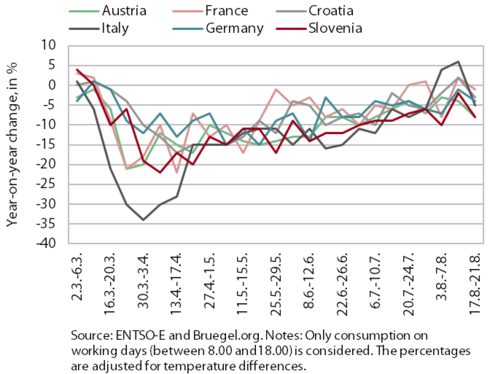
The third week of August recorded a somewhat larger year-on-year decline in weekly electricity consumption again. After in mid-August weekly electricity consumption had come very close to last year’s level (-2%), the decline increased again in the third week of the month (-8%). Among Slovenia’s most important trading partners, Austria saw the same year-on-year decline, while the declines in other countries were smaller, between 1% (France) and 5% (Italy).
Traffic of electronically tolled vehicles on Slovenian motorways, August 2020
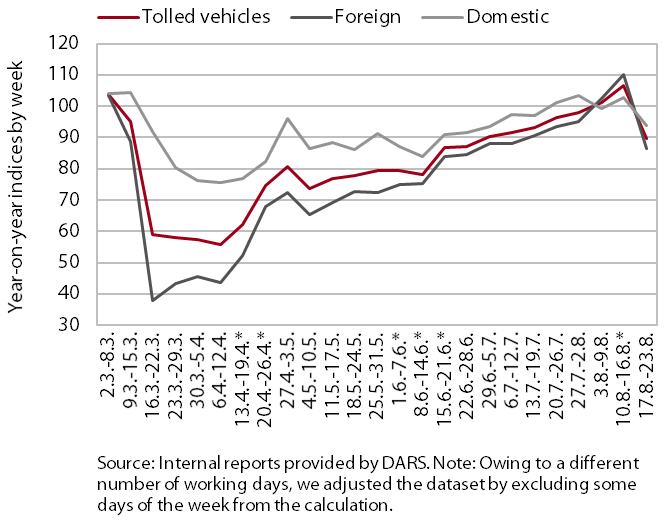
In the fourth week of August, freight traffic on Slovenian motorways dropped below the pre-epidemic level again. After a significant decline with the declaration of the epidemic, freight traffic had started to increase more markedly in the middle of June and was already 6% higher year on year in the middle of August (adjusted for holidays). In the second half of August, it fell again and was 10% below the comparable level in 2019. The distance travelled by domestic hauliers was 6% lower and the distance travelled by foreign hauliers almost 14% lower year on year.
Economic sentiment, August 2020
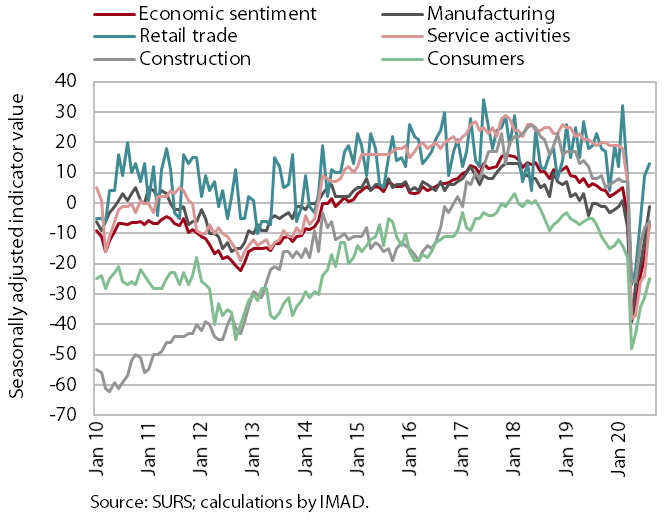
In August, economic sentiment improved for the fourth consecutive month. The economic sentiment indicator was however still significantly lower than in the same period of last year (difference: - 12.3 pps), but the year-on-year difference was much smaller than in April (- 46.1 pps). The improvement was attributable to all confidence indicators. Since April, confidence has increased the most in retail trade and manufacturing. Relative to the previous month, confidence in service activities otherwise improved the most in August.
Trade, June 2020
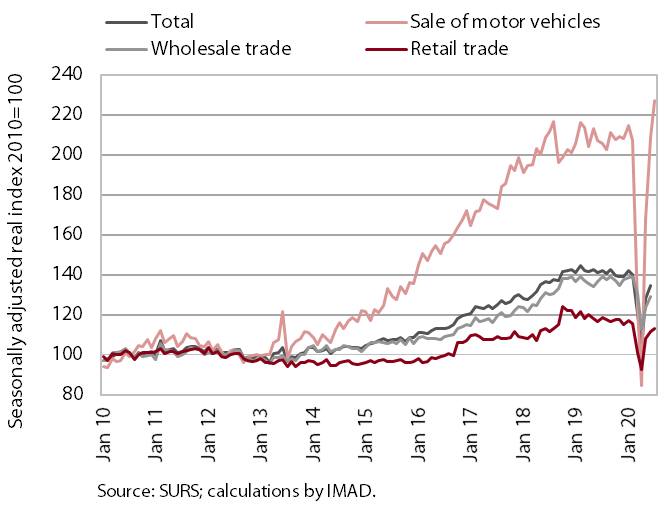
Turnover in trade increased further in June and July. With further growth in all three largest sectors, total turnover in June was already similar to that in June last year (orig.). It increased the most in the sale of motor vehicles, where it had also dropped the most in March and April. According to preliminary data, in July motor vehicle sales already exceeded last year’s level by a tenth. Turnover in retail trade of non-food products was also already a tenth higher year on year in June; purchases that had been postponed during the epidemic (purchases of furniture, household appliances, computer and telecommunications and sports equipment) were high in particular. According to preliminary data, growth also continued in July, albeit at a much more moderate pace.
Market services, June 2020
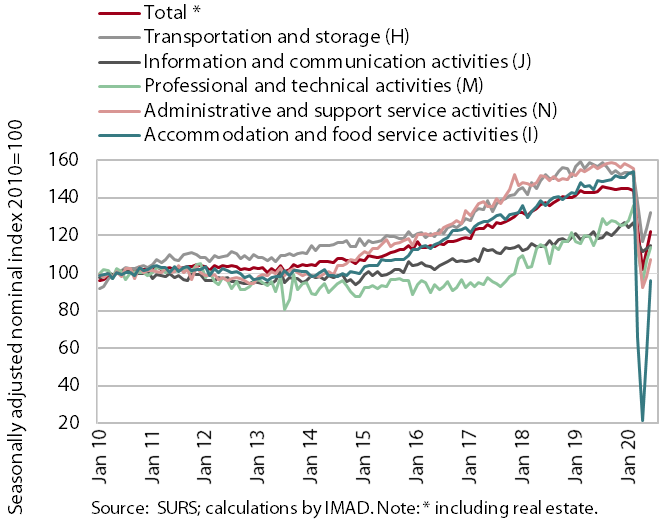
Despite further growth in all market services, total turnover was around 15% lower in June than before the outbreak of the epidemic. After plunging during the epidemic, monthly growth was highest in accommodation and food service activities. This was also partly due to the introduction of tourist vouchers, which contributed to an increase in overnight stays by domestic tourists; the number of overnight stays by foreign tourists remained low. Turnover growth in administrative and support service activities was mainly due to the strengthening of turnover in employment agencies. Monthly growth also continued in transportation, amid the still lower volume of public transport, and somewhat more slowly in professional and technical activities.
